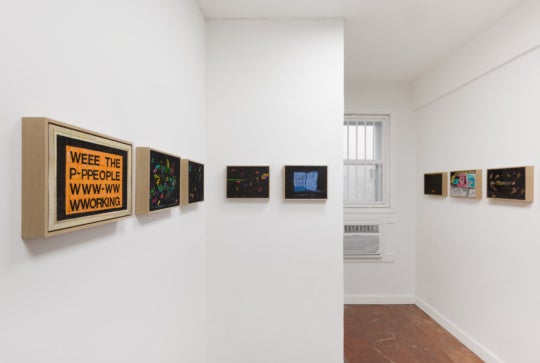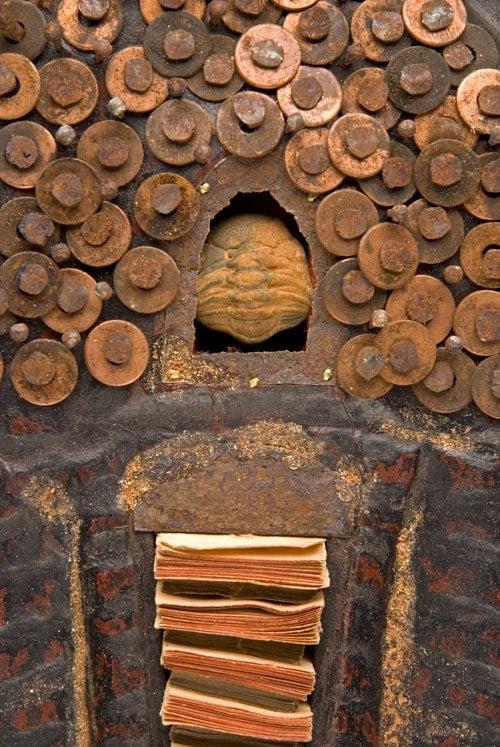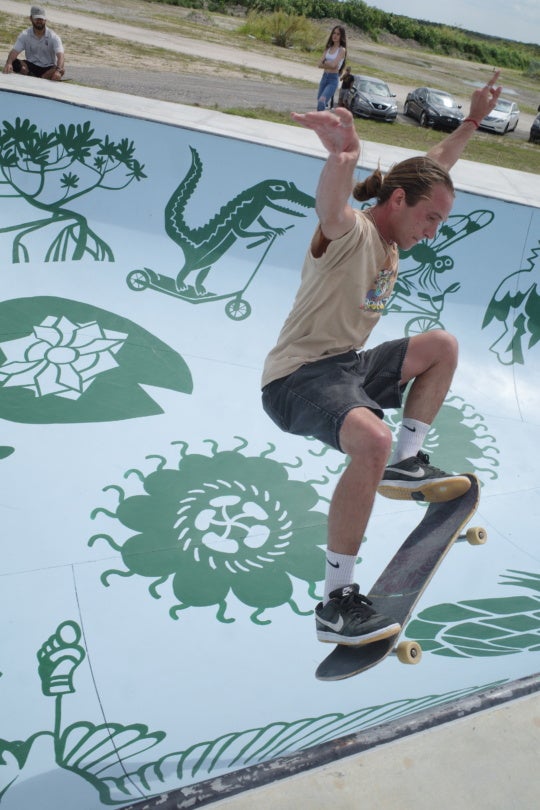
Yanira Castro, Brooklyn-based choreographer and winner of a Bessie Award, and artist Joelle Dietrick discuss the dancer’s current residency at the Maggie Allesee National Center for Choreography (MANCC) at Florida State University in Tallahassee, Florida. Yanira is working on COURT / GARDEN, scheduled to premier in New York at Danspace Project in fall 2014. A Kickstarter campaign for the project continues through June 12, 2014.
COURT / GARDEN, “a spectacle in three acts,” is a new dance and live music performance by A Canary Torsi (Castro’s site-adaptable, installation-based performance group). It takes its inspiration from the imperial ballets of Louis XIV’s French Court, the spectatorship of the proscenium stage, and the presentation of video feeds as cultural, social, and political frames of experience. COURT / GARDEN delves into an operatic vocabulary to reflect on how power functions in contemporary theatrical images, from the fashion runway to the establishment of cultural icons.
Joelle Dietrick: Your website describes your choreography in the following order: space, dance, video and audio installations, audience, with dance happening in “a multiplicity of spaces: from warehouses, restrooms, and gardens to the stage…within visual and audio installations where the audience’s presence dramatically impacts the work.” I love that space—especially unusual spaces—is listed first. Can you explain your process in relationship to that list?
Yanira Castro: There is no hierarchy in that list, but it speaks not so much to process as a way of sensing. I often have a sense of the expansiveness of something—the space something needs to be within. A bathroom is a very concrete thing for me, not as a site but as a container, a frame. There is the space as frame/container and then the dance in it, and then the environment as frame, to focus the audience on the dance.
JD: Your current work Court / Garden potentially could be my favorite so far. I love how your humor comes across in this piece. And those diagrams for the original canary dance! Where did you find those?
YC: Our Baroque dance mentor, Catherine Turocy, shared those diagrams with us. She taught us the canary by using notation from the time period. It is incredible to me how intricate 18th-century notation is—each one of those marks is a step in the floor pattern. Crazy!
JD: I love the contrast of the bathroom and paper towels to the Baroque-inspired excessiveness of the seated figure’s dress, but I’m curious, why didn’t you include the diagrams in the Kickstarter video, or give the audience a little bit more information about how the canary dance changed over time, almost like a game of telephone, which you documented in a video from your MANCC residency in fall 2013?
YC: I just wanted to have fun with it and not be beholden to the standard Kickstarter format of: here is who I am, and this is what I am doing, and why you should support me. I wanted to get right to the point. We did utilize the MANCC residency documentation as our first update to give context to the project for anyone seeking more information, but I wanted to have something more visual for the KS video.
JD: Your choreography highlights how the canary dance changes over time in relationship to power structures surrounding its performance. In the MANCC video, you joke about making a bastardized version of the dance. That’s what I admire about your work in general—I love how you unabashedly embrace spaces and then develop a series of moments that relate to the space’s flaws and embrace those hiccups.
Contemporary glitch artists have a similar process. They capture those moments previously considered abject and frame them as moments for examination, and occasionally celebration. Philip Sternes has a nice collection of links about glitch art. Even PBS has an offbook episode documenting the genre. [Also see Jon Santrom’s performance for Transmediale 2012]. In the restroom section of your work Dark Horse / Black Forest, two dancers’ movements resemble glitchy automata, so I think you’ve had similar concerns for a long time. Do you see any connection between glitch art and the choreography for Court / Garden?
YC: Within choreography and image-making, I dig into numbers and codes, looping, sampling and repetition. I utilize disruption quite a bit and drop in sources. It reverberates. And then is gone. I enjoy the appearance and vanishing of things. Emergences and exits without consequence. I enjoy crafting that. For me, there is a fragile code in a dance that needs to be discovered. My work is finding it with the performers, excavating it, and crafting it. What might start off as accidents ripple through and become main events. I’m often trying to find ways for that to happen live, for the hiccups and the randomness to seem to come from nowhere but actually to be built in as possibilities. With Court / Garden we utilized the 17th- and 18th-century canary as the code to break—a code that we could loop, rewire, disrupt, sample.
JD: This may sound strange, but I think about glitch a lot in relationship to making art and writing in the face of motherhood. Talk about unexpected interruptions! In an interview after you received the Bessie in 2010, you said, “What blows me away is that people keeping making work under really hard circumstances.” Could you elaborate? How do you balance work and life? You are great at getting away for residencies. Teach me how!
YC: I was speaking about it from a financial point of view at the time. The piece that won a Bessie, Dark Horse / Black Forest, was made on a shoestring budget. It had the tremendous support of the collaborators and the presenters but little else. I was marveling at how stuff gets done under these circumstances. There are big questions in there for me about labor and sustainability.
My work/life balance with a young child is tough, so I am very strategic with my time. It also keeps changing as my son’s needs change. When he was young, I could not be away from him, but he could come with me. Now that he is in school, he cannot come with me, but he can be away from me longer. It is a constant checking-in and reassessing, and I have fabulous family support that makes it possible. Without two amazing sets of grandparents who are willing and able to be involved, I’m not sure how I would accomplish my work.
Joelle Dietrick is a Tallahassee-based artist, who teaches at Florida State University.




